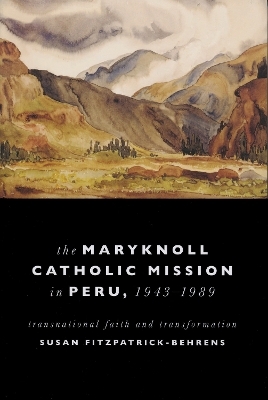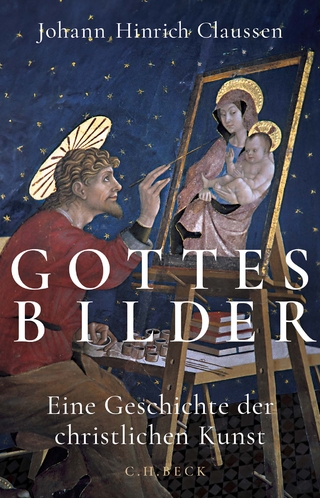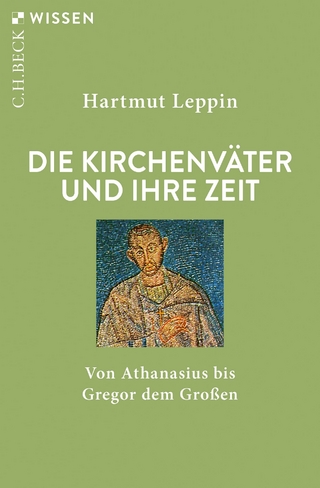
Maryknoll Catholic Mission in Peru, 1943-1989
Transnational Faith and Transformations
Seiten
2011
University of Notre Dame Press (Verlag)
978-0-268-02905-0 (ISBN)
University of Notre Dame Press (Verlag)
978-0-268-02905-0 (ISBN)
- Lieferbar (Termin unbekannt)
- Versandkostenfrei innerhalb Deutschlands
- Auch auf Rechnung
- Verfügbarkeit in der Filiale vor Ort prüfen
- Artikel merken
This book shows how Maryknollers transformed the social and religious culture in Peru and, at the same time, were also transformed in their beliefs, methods, and practices.
Maryknoll Catholic missionaries from the United States settled in Peru in 1943 believing they could save a "backward" Catholic Church from poverty, a scarcity of clergy, and the threat of communism. Instead, the missionaries found themselves transformed: within twenty-five years, they had become vocal critics of United States foreign policy and key supporters of liberation theology, the preferential option for the poor, and intercultural Catholicism.
In The Maryknoll Catholic Mission in Peru, 1943-1989, Susan Fitzpatrick-Behrens explains this transformation and Maryknoll's influence in Peru and the United States by placing it in the context of a transnational encounter Catholics with shared faith but distinct practices and beliefs. Peru received among the greatest number of foreign Catholic missionaries who settled in Latin America during the Cold War. It was at the heart of liberation theology and progressive Catholicism, the center of a radical reformist experiment initiated by a progressive military dictatorship, and the site of a devastating civil war promoted by the Maoist Shining Path. Maryknoll participated in all these developments, making Peru a perfect site for understanding Catholic missions, the role of religion in the modern world, and relations between Latin America and the United States.
This book is based on two years of research conducted in Peru, where Fitzpatrick-Behrens examined national and regional archives, conducted extensive interviews with Maryknoll clergy who continued to work in the country, and engaged in participant observation in the Aymara indigenous community of Cutini Capilla. Her findings contest assumptions about secularization and the decline of public religion by demonstrating that religion continues to play a key role in social, political, and economic development.
Maryknoll Catholic missionaries from the United States settled in Peru in 1943 believing they could save a "backward" Catholic Church from poverty, a scarcity of clergy, and the threat of communism. Instead, the missionaries found themselves transformed: within twenty-five years, they had become vocal critics of United States foreign policy and key supporters of liberation theology, the preferential option for the poor, and intercultural Catholicism.
In The Maryknoll Catholic Mission in Peru, 1943-1989, Susan Fitzpatrick-Behrens explains this transformation and Maryknoll's influence in Peru and the United States by placing it in the context of a transnational encounter Catholics with shared faith but distinct practices and beliefs. Peru received among the greatest number of foreign Catholic missionaries who settled in Latin America during the Cold War. It was at the heart of liberation theology and progressive Catholicism, the center of a radical reformist experiment initiated by a progressive military dictatorship, and the site of a devastating civil war promoted by the Maoist Shining Path. Maryknoll participated in all these developments, making Peru a perfect site for understanding Catholic missions, the role of religion in the modern world, and relations between Latin America and the United States.
This book is based on two years of research conducted in Peru, where Fitzpatrick-Behrens examined national and regional archives, conducted extensive interviews with Maryknoll clergy who continued to work in the country, and engaged in participant observation in the Aymara indigenous community of Cutini Capilla. Her findings contest assumptions about secularization and the decline of public religion by demonstrating that religion continues to play a key role in social, political, and economic development.
Susan Fitzpatrick-Behrens is an associate professor of history at California State University, Northridge.
| Reihe/Serie | Kellogg Institute Series on Democracy and Development |
|---|---|
| Zusatzinfo | 2 Maps; 5 Halftones, black and white |
| Verlagsort | Notre Dame IN |
| Sprache | englisch |
| Maße | 152 x 229 mm |
| Gewicht | 445 g |
| Themenwelt | Geisteswissenschaften ► Geschichte ► Regional- / Ländergeschichte |
| Religion / Theologie ► Christentum ► Kirchengeschichte | |
| ISBN-10 | 0-268-02905-9 / 0268029059 |
| ISBN-13 | 978-0-268-02905-0 / 9780268029050 |
| Zustand | Neuware |
| Informationen gemäß Produktsicherheitsverordnung (GPSR) | |
| Haben Sie eine Frage zum Produkt? |
Mehr entdecken
aus dem Bereich
aus dem Bereich
eine Geschichte der christlichen Kunst
Buch | Hardcover (2024)
C.H.Beck (Verlag)
32,00 €
von Athanasius bis Gregor dem Großen
Buch | Softcover (2024)
C.H.Beck (Verlag)
12,00 €


